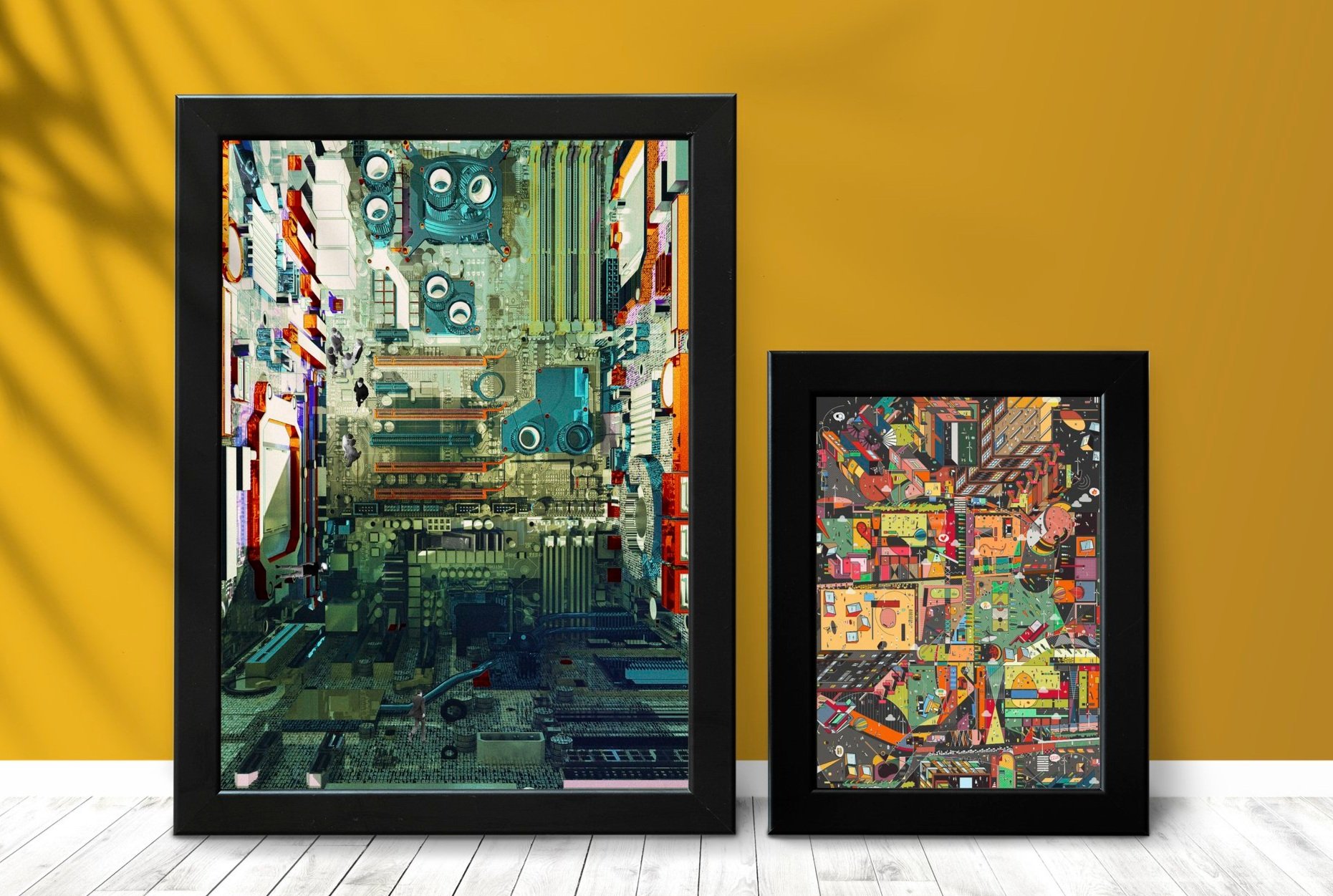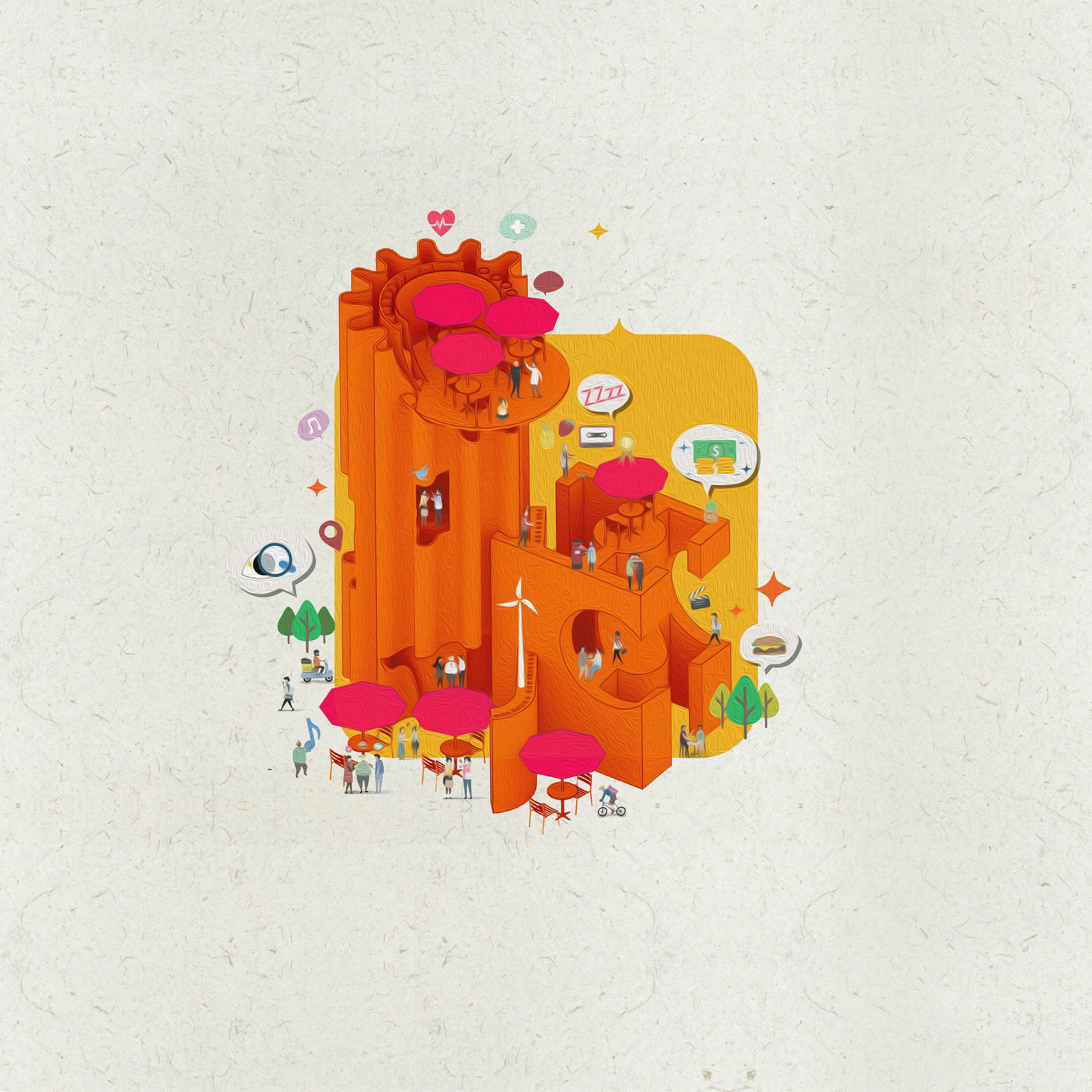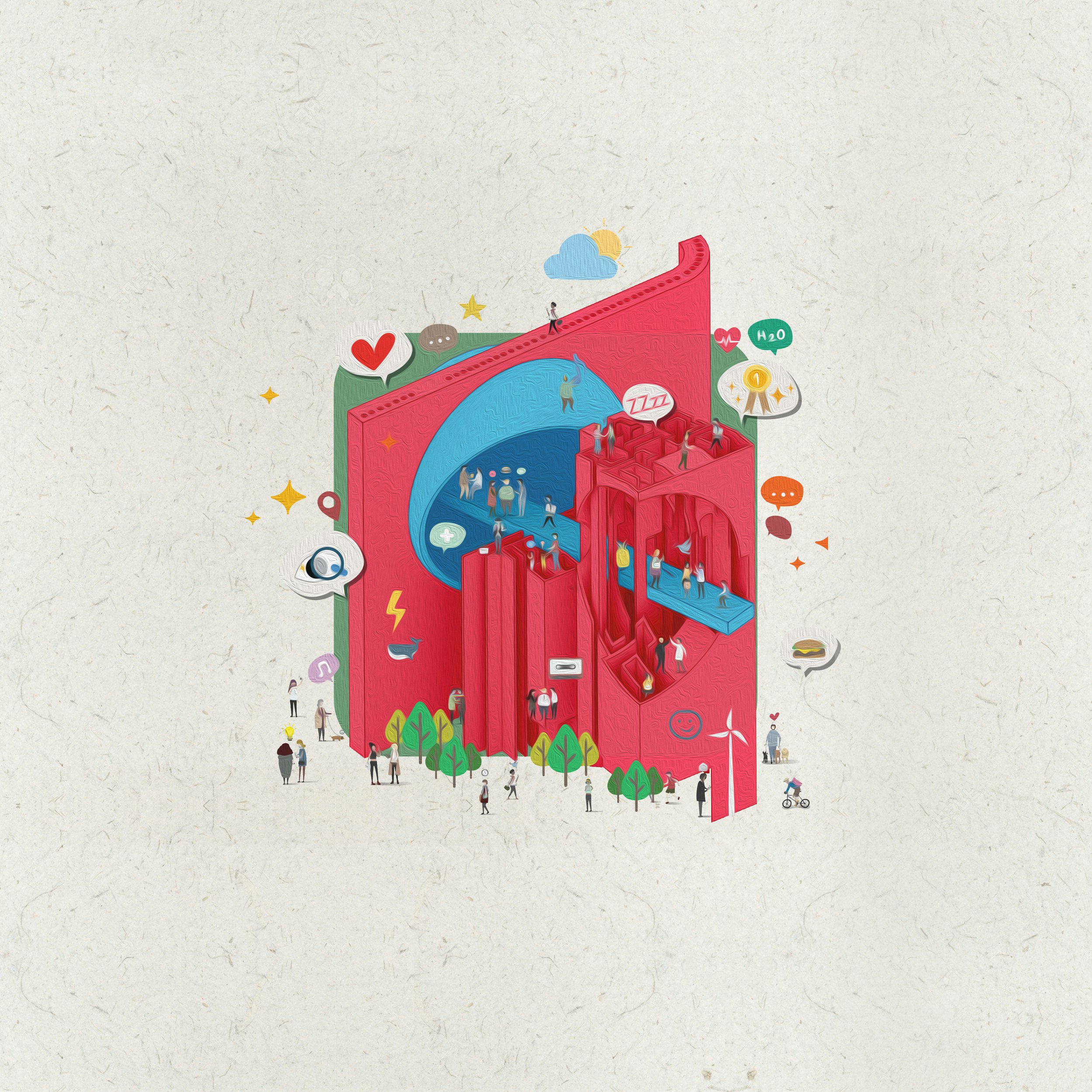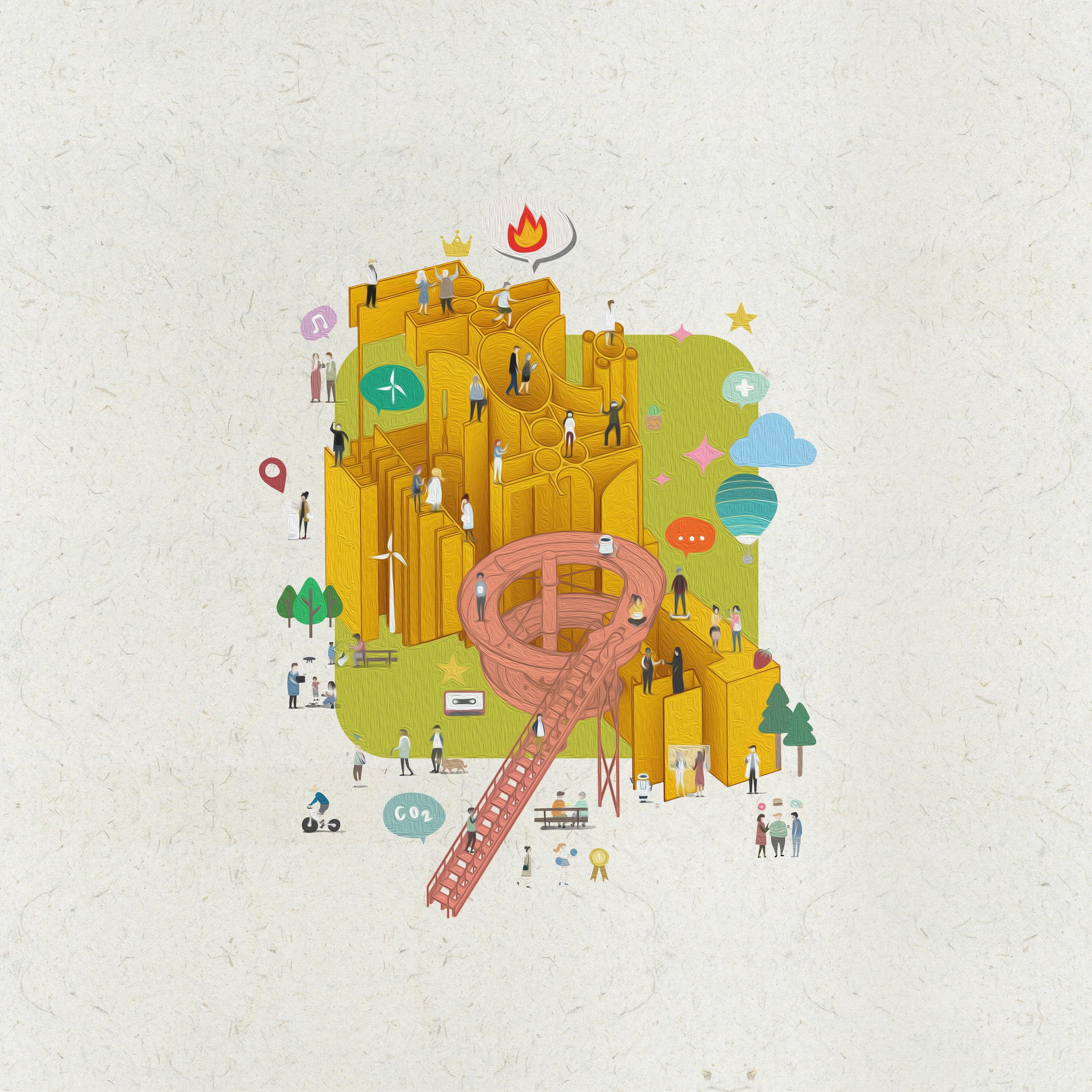
The Post-Office․
In collaboration with Jessica Jiang
The future of the office typology is that it simply will not exist…
…at least not within the parameters of our current understanding of the office as a physical space to process, organize, and generate information. The Great Recession demonstrated the inherent precariousness of the American economic system; gradual collapse of Western neoliberalism coupled with swiftly advancing artificial intelligence and automation will render obsolete our prevailing ideology of work.
The notion of a world liberated from the culture and ubiquity of work is not new; this concept has been intermittently asserted throughout the history of modern capitalism. However, this vision appeared just out of reach until the relatively recent proliferation of AI technologies. What precisely will happen in the post-work, post-office future? Perhaps consumption, excess, and leisure would overtake our daily lives, and AI will take on our jobs. Perhaps the absence of work would make space for creative pursuits, enhancing our cultural productivity. Perhaps work is so profoundly embedded in our mode of operation that we would simply invent new forms of work for the sake of work. The Post-Office is a visual speculation on various aspects of these prospective realities.






Finalist․
Non Architecture Competitions : Working
-
The aim of the “Thinking” competition was to develop a design proposal for the office typology, intended as a space to process, organize and generate information. In other words, a place for mental work.
-
Recently a series of new initiatives have emerged in relation to office innovation. While companies like Google revolutionized the way office work and workplaces are conceived, remote work and freelancing are increasing chances for freedom and flexibility, turning living rooms and coffee places into modern offices. In the meantime, digitization and automation not only changed the way work is done, but also the way work is retributed. If working conditions today tend to get better in traditional offices, there is an uprising new class of digital “slaves” under heavy exploitation.
-
Within this context, with critical thinking and creative attitude, the participants were urged to create an artifact, merging considerable programmatic innovation and valuable design tools. The proposal could be a device, a piece of furniture, an interior design project, a pavilion, a building or an urban plan. The scale of intervention, program dimensions and location are were given and they were arranged by the participants to better suit their project.






